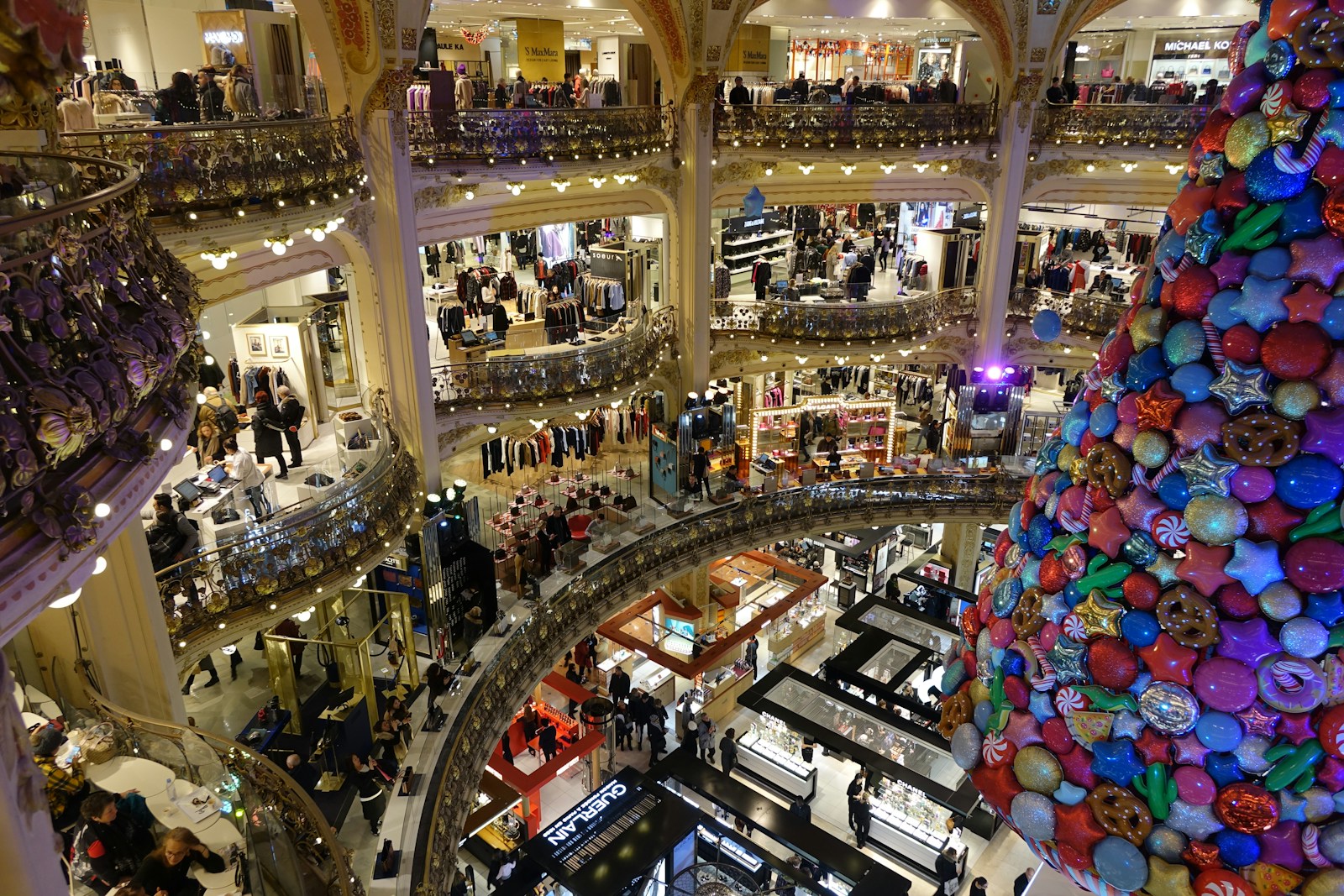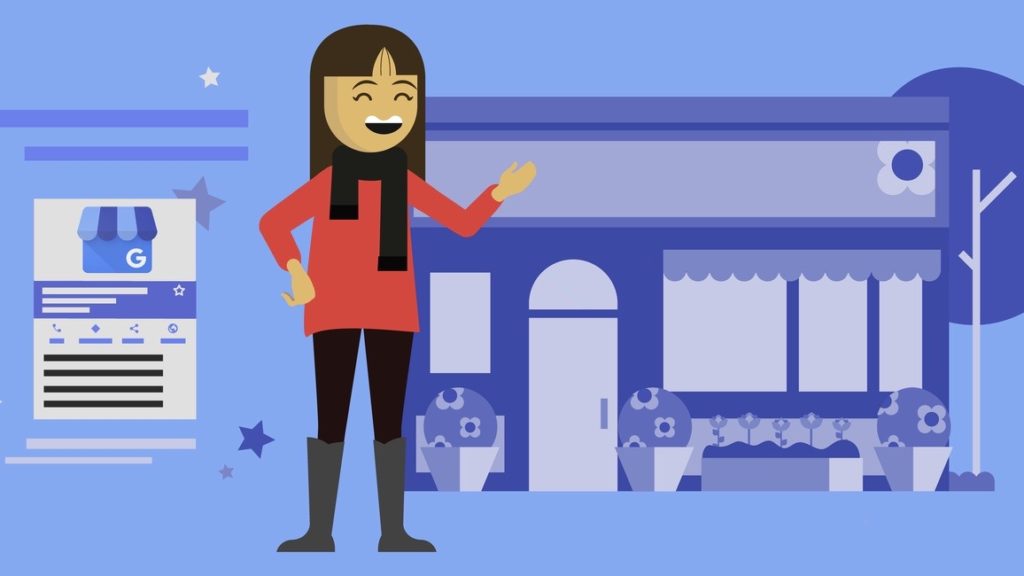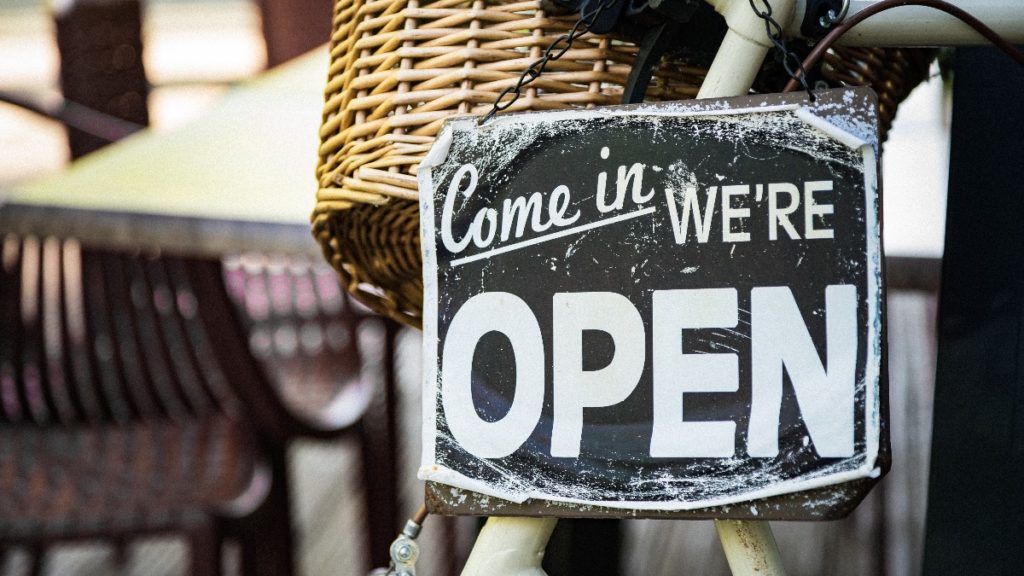
Key Points: The Ultimate Guide to Holiday Marketing
The Ultimate Guide to Holiday Marketing: An Overtop Media Playbook for Charlotte Businesses
The Clock is Ticking—Why this is the Most Complex Holiday Season Yet for Charlotte Businesses. For Charlotte businesses, the 2025 holiday season has already begun. The familiar rhythm of the retail calendar has been replaced by an always-on, AI-driven, and economically complex marathon. As Google’s own holiday guidance states, “The clock is ticking”. The challenge is no longer a simple question of “getting ready for the holidays”; it’s about mastering a new and fragmented consumer journey, today.
This year, Queen City retailers face a unique and challenging landscape. As a top-ranked Google Partner digital agency in Charlotte , Overtop Media Digital Marketing has analyzed the conflicting economic signals, and the data reveals a critical local narrative. This is the “Charlotte Paradox,” and understanding it is the key to winning the season.
The 2025 Challenge: The “Charlotte Paradox”
On one hand, the national forecast appears frosty. Economic uncertainty is the dominant theme.
- National Pullback: Deloitte’s 2025 holiday survey indicates that consumers plan to spend an average of $1,595, a significant 10% decrease from 2024.
- Widespread Anxiety: 77% of shoppers expect higher prices on holiday items, and 57% anticipate a weaker economy next year. This sentiment is amplified by concerns over new tariffs and a higher cost of living.
- Generational Cuts: The pullback is most severe among younger shoppers. PwC reports that while average spending is down 5%, Gen Z plans to cut its holiday budget by a staggering 23%.
This national data, however, does not tell the whole story for our local market.
Contrasting this “frosty forecast” is a story of “cautious optimism” right here in North Carolina.
- Local Growth: While the nation braces for a pullback, North Carolina’s 2024 holiday retail sales (November-December) are projected to see slight growth, rising to $42.24 billion from $42.08 billion in 2023.
- Charlotte’s Optimism: Local Charlotte reporting paints an even more positive picture. WCNC noted a potential “spending surge,” with a local financial advisor calling the outlook “surprisingly positive,” adding, “People feel better about the future”.
Resolving the Paradox: A “Spending Reset”
This isn’t a contradiction. It’s a clarification. The 2025 Charlotte shopper has not given up on the holiday season; they have simply become more strategic.
The data points to a broad “spending reset”. Consumers are not stopping their spending; they are strategizing it. They are driven less by simple cost-cutting and more by life-stage pressures and evolving priorities. Seven in 10 shoppers are engaging in value-seeking behaviors, such as shopping at more affordable retailers or redeeming loyalty points.
This creates the central challenge and opportunity of 2025: The winners will not be the cheapest brands, but the brands that provide the best-proven value and the most seamless, convenient, and trustworthy experience.
This playbook is Overtop Media’s mandate. As a premier Google Partner and a top-ranked digital agency in Charlotte, NC , we have synthesized this complex landscape. We will provide the AI-driven, omnichannel strategy that Charlotte’s local businesses need to navigate this new reality and win the entire season—from the first click in October to the hidden “Fifth Quarter” of profitability in January 2026.
Part 1: The 2025 Charlotte Holiday Shopper: A New Playbook for a New Consumer
To win the holiday season, you must first understand the fundamental shifts in how your customers now think, discover, and shop. The old models are broken. The 2025 consumer, especially in a dynamic market like Charlotte, operates on a new set of rules.
The Omnichannel Default: The Line Has Blurred to Non-Existence
The concept of “online vs. offline” is dead. Your customer is now “omnichannel by default”. They move fluidly between their phone and your physical storefront, and they expect a single, unified experience.
Google’s data is explicit: 71% of U.S. holiday shoppers are omnichannel. For the critical Gen Z demographic, that number jumps to 79%.
This shopper’s journey is not a straight line; it’s a “mosaic of micro-decisions”. They “platform-hop,” starting their discovery on one app, validating on another, and completing the purchase on a third—which may be your physical store.
This behavior is amplified in Charlotte. Consumers are actively encouraged to “support local” and visit physical markets like Camp North End , the South End Winter Wonderland, or the NoDa Holiday Market. But that physical visit is almost always preceded by a digital planning session. They will check your hours, your inventory, and your reviews before they leave the house. Your digital presence is your physical presence.
The Gen Z Disruption: A New Funnel for a New Generation
The single most significant shift in marketing is the new consumer discovery funnel, driven entirely by Gen Z. If your marketing plan still assumes customers start their journey on Google, you are already behind.
The New Funnel: From “Search-First” to “Social-First”
The old model was linear: a shopper had a need (e.g., “gift for mom”), and they searched Google. The new model is inverted.
Step 1: Discovery (Social Media) For Gen Z, product discovery no longer begins with a search query. It begins with a scroll.
- TikTok and Instagram are the new “Google.” A 2025 GRIN report shows that for Gen Z, Instagram (30.4%) and TikTok (23.2%) are the top two channels for product discovery, beating Google, which has fallen to 18.8%.
- TikTok as a Visual Search Engine: Over 70% of Gen Z now use TikTok as a search engine. They don’t just “find” content; they actively search for product recommendations, tutorials, and “best local spots”. They are more likely to search “best sushi in Charlotte” on TikTok than on Google.
Step 2: Validation (Google & YouTube) Here is the critical turn: after discovering a product on TikTok, the shopper’s journey immediately moves to validation. And this is where Google and YouTube dominate.
- YouTube is the #1 Shopping Platform: According to an Ipsos survey, YouTube is the #1 platform consumers say they use for holiday shopping when compared to other video and social platforms.
- The Reason is Trust: This platform’s influence is rooted in credibility. An overwhelming 82% of U.S. viewers say that YouTube has the most trusted creators.
- The “Confidence” Engine: In a crowded, confusing market, shoppers turn to YouTube creators to filter choices and build confidence. Search (Google and YouTube) is the #1 way shoppers confirm critical facts like product quality, durability, good reviews, and brand reputation.
The “Social Discovery to Google Validation” Funnel
This new, multi-platform journey is the “Social Discovery to Google Validation” funnel. For a Charlotte business, it looks like this:
- Discovery: A Gen Z shopper in South End is scrolling TikTok. They see a Charlotte-based micro-influencer unbox a product from your boutique.
- Interest: They are intrigued but skeptical of the ad.
- Validation (Step A): They immediately open YouTube and search ” reviews” to see what trusted, long-form creators say about it.
- Validation (Step B): Once convinced of the product’s quality, they open Google Search or Maps and type, “buy near me” or ” Charlotte.”
- The Moment of Truth: This is where your holiday preparation pays off… or fails. They land on your Google Business Profile. Are your hours correct? Are your reviews good? Does your inventory show the product is “in stock”?
This new funnel creates a clear mandate for Charlotte businesses: you must have a two-pronged strategy. You need a “Discovery” strategy on social media to get in front of new customers (see Part 5) and a “Validation” strategy on Google to “catch” and convert that demand when they come looking for proof (see Part 2 & 3).
AI as the New Shopping Assistant: Your Next Customer is an Algorithm
The newest and most disruptive trend is the rise of Generative AI as a personal shopping assistant.
- Rapid Adoption: 33% of all shoppers plan to use Generative AI in their holiday journey this year—more than double the figure from 2024.
- Generational Leadership: This is led by younger consumers. 44% of Millennials and 42% of Gen Z are likely to use AI tools for holiday purchase inspiration.
- How They Use It: They are asking tools like ChatGPT for “gift ideas,” “price comparisons,” “product recommendations,” and to “summarize product reviews”.
This trend has a profound and immediate implication for your business. When a shopper asks an AI, “Find me the best deals on locally-made holiday gifts in Charlotte,” the AI model can’t browse your aesthetically pleasing-but-unstructured website. It must find structured, machine-readable data.
If your inventory, pricing, holiday hours, and product descriptions are “dark”—locked away in a PDF menu or simply not online in a structured format—then to this 33% of shoppers, your business is invisible.
Your digital marketing is no longer just for human eyeballs. You must have a data-rich, structured online presence to be recommended by your customer’s AI assistant. This requires a perfectly optimized Google Business Profile and, for retailers, a Google Merchant Center product feed. This is the new, high-level SEO, and it’s a foundational component of the AI-first strategy that an expert Google Partner like Overtop Media implements.
Part 2: The Non-Negotiable Foundation: Mastering Your Local Digital Front Door (Google Business Profile)
Before a customer ever sees your website, they see your Google Business Profile (GBP). This is your digital front door, your billboard, and your welcome mat, all rolled into one. In the “Social Discovery to Google Validation” funnel, your GBP is the final and most critical point of conversion.
This is a zero-click battleground. Your goal is to give a potential customer all the information they need to make a decision—when are you open, what do you have, and are you trustworthy?—without them ever having to leave the Google search page.
The Cost of Inaccuracy
Getting this wrong is not an option. The holiday season is unforgiving, and consumer trust is fragile.
- Research shows that finding incorrect information on a business listing would stop 63% of consumers from using that business.
- A single customer driving to your SouthPark-area store only to find you closed—when your GBP said you were open—will not just leave; they will likely leave a scathing 1-star review. That single negative review can poison your holiday reputation and cost you thousands in lost sales.
The Holiday-Ready GBP Checklist
As a top-rated digital agency in Charlotte , Overtop Media provides this actionable checklist for every local business. These are the free steps you must take today to prepare your digital front door for the holiday rush.
| Feature | Holiday Action Plan | Expert Insight & Rationale |
| Holiday Hours | Go to your GBP dashboard and set “Special Hours” for every single holiday: Thanksgiving, Black Friday, Christmas Eve, Christmas Day, New Year’s Eve, and New Year’s Day. | This is the #1 priority. It’s more than just information; it’s a trust signal. Google actively prompts users to confirm holiday hours. Setting them accurately signals to Google’s algorithm that your profile is active and well-managed, which can boost your local SEO ranking. Most importantly, it prevents customer frustration. |
| Google Posts | Use all three post types frequently : 1. Offer Post: “Black Friday Sale: 20% Off All Jewelry!” 2. Event Post: “Join us for the Camp North End Mistletoe Market!”. 3. Update Post: “Our team is feeling festive! Check out our holiday decorations.” | Posts are free advertising. They allow you to showcase promotions, highlight seasonal products, and show the personal side of your business. This keeps your profile looking fresh and engaging, which Google’s algorithm rewards. |
| Festive Photos | Upload new, high-quality, “festive” photos. 1. Exterior: Your holiday window display. 2. Interior: Your decorated shop, your tree, your holiday product displays. 3. At Work: Your team in santa hats, photos of you gift-wrapping. | Photos are a customer’s first impression of your store’s atmosphere. They build trust and convey a festive spirit, making a customer want to visit. Show, don’t just tell, that you are ready for the holidays. |
| Google Q&A | Proactively “Ask & Answer” your own most common questions. Go to your public GBP, ask a question as a customer, and then immediately log in to answer it as the “Owner”. | This is a crucial, high-level tactic. You get to control the narrative and preemptively manage customer expectations. Must-answer questions include: 1. “What is your holiday return policy?” 2. “Do you offer free gift wrapping?” 3. “What’s the best place to park during the holiday rush?” |
| Products & Services | If you have specific holiday offerings (e.g., “Christmas Dinner Menu” for a restaurant, “Holiday Gift Baskets” for a retailer), add them to your “Products” or “Services” tab. | This is more permanent than a Post. This data feeds into Google’s algorithm and helps you appear for long-tail seasonal keyword searches (e.g., “restaurants with christmas menu charlotte”). This is also critical for AI-readiness (Part 1). |
| Holiday Return Policy | Beyond the Q&A, use a Google Post (or update your main description) to clearly and simply state your holiday return/exchange policy. | This is non-negotiable for managing customer expectations and setting the stage for a smooth “Fifth Quarter” (Part 6). Over 60% of shoppers say they confirm an item is in stock and check the return policy before going to buy it. |
| Messaging | If your business uses the GBP Messaging feature, ensure someone is monitoring it. If you will be closed or on vacation, turn the feature off. | A non-responsive chat is worse than no chat at all. It breaks trust instantly. |
A Final Word of Caution: Avoid Suspensions
As your expert digital partner, we offer this critical warning: the holiday season is not the time to make major, fundamental changes to your GBP. Do not change your business name, address, or primary business category. These types of “core” changes can trigger an automatic re-verification or suspension, which can take days or weeks to resolve—effectively making your business invisible during your most profitable quarter. Stick to updating the features designed for seasonal changes (Hours, Posts, Photos, Q&A).
Part 3: Bridging the Digital Divide: How to Get Charlotte Shoppers from Google Search to Your Store
With a perfect Google Business Profile, you’ve “caught” the customer at their moment of validation. Now, you must answer their single most important question—a query that will drive over a trillion dollars in holiday sales: “Is this in stock, near me?”
The $1 Trillion Query: “In Stock, Near Me”
The 2025 shopper (especially the 79% omnichannel Gen Z shopper ) expects total inventory transparency. They will not “drive and hope.”
- Google data shows over 60% of shoppers say they will confirm an item is in stock online before going to a store to buy it.
- They are actively using the “in stock” filter on Google Search.
If your physical inventory is not visible online, you are invisible to this high-intent, ready-to-buy customer. They will filter you out of their results and go to your competitor (like Target or Walmart) who does show their local stock.
This is the problem that Google’s Local Inventory Ads (LIAs) were built to solve.
The Solution: Google Local Inventory Ads (LIAs)
Local Inventory Ads are a powerful Google Ads format that bridges the final gap between a digital search and your physical cash register.
- What They Are: LIAs are ads that appear on Google Search, Google Maps, and the Shopping tab. They show shoppers your in-store product, price, and real-time inventory availability from your specific local store.
- The Benefit (The “Why”): They are the direct solution to the “in stock, near me” query.
- Promote In-Store Inventory: They let a local shopper know your store has the product they want, at the exact moment they are searching for it.
- Bring Your Physical Store Online: They create a “digital storefront” for your physical store, showing your product availability on a Google-hosted page or your own website.
- The Proof: The data is clear. Retailers who add Local Inventory Ads to their existing Shopping campaigns see an average 21% increase in store visits.
Local Case Study Spotlight: The 252% Revenue Increase
This strategy is not theoretical; it is a proven revenue-driver in our market. One North Carolina-based retailer implemented a new Google Ads strategy focused on Google Shopping. By integrating local product ads with their Shopping campaign, they successfully drove more foot traffic to their physical store.
The results were staggering: Their Google Ads revenue increased by 252% year-over-year, on just a 33% increase in ad spend. November and December saw the best online revenue results their company had ever seen. This is the measurable power of connecting your digital advertising directly to your in-store inventory.
The Small Business ‘Easy Button’: Pointy from Google
At this point, many small business owners in Charlotte are thinking the same thing: “I’m a small boutique, not a big-box store. I don’t have a ‘real-time inventory feed.’ I’m too busy to build one.”
This is the #1 barrier to entry, and it’s where Overtop Media’s expertise as a Google Partner becomes a game-changer for your business.
The solution is Pointy from Google.
- What It Is: Pointy is a free tool from Google designed specifically for local, brick-and-mortar retailers.
- How It Works: Pointy plugs directly into your existing Point of Sale (POS) system (the one you already use to scan barcodes at checkout).
- What It Does: It automatically uploads your in-store product inventory directly to your Google Business Profile and makes that inventory eligible for Local Inventory Ads.
This is the “easy button.” It requires no manual data entry and no complex feed management. It democratizes this powerful ad format, allowing an independent hardware store , a local pet supply shop, or a NoDa boutique to compete with the giants.
This is the difference between a simple “ad agency” and a true digital marketing partner. Overtop Media doesn’t just manage your ads; we provide the technical solutions to make your business eligible for the most effective, high-ROI ad formats that our competitors don’t even know how to implement.
Part 4: The Overtop Media Playbook: Winning the Peak Season with Google AI
Mastering your GBP (Part 2) and enabling Local Inventory Ads (Part 3) are the foundational, non-negotiable steps. Now, we escalate. This is the expert-level, Google Partner strategy that Overtop Media uses to actively win the peak season for our Charlotte clients.
This playbook leverages Google’s most powerful AI tools to move beyond simple ads and execute a sophisticated, “omni-first” growth strategy.
1. From Local Campaigns to Total Dominance: Performance Max (PMax) for Store Goals
The days of running separate, siloed campaigns for “Search,” “Display,” and “Video” are over. Simple Smart Shopping and Local campaigns have been upgraded. The new standard for any serious retailer is Performance Max (PMax).
- What It Is: PMax is a holistic, AI-driven campaign type. Instead of you guessing at bids and placements, you provide Google with your business goals and your creative assets.
- How We Use It: We set up a PMax campaign “for store goals”.
- Goal: We tell the AI our objective is to drive offline business.
- Locations: We link your Google Business Profile to the campaign.
- Assets: We provide a full suite of creative assets—compelling text, festive images, and short video clips.
- What It Does: Google’s AI then takes over, optimizing your bids and automatically placing your ads across its entire network to find your most valuable customers. This includes:
- Google Search
- Google Maps
- Waze
- YouTube
- Gmail
- The Google Display Network
The campaign’s AI is not optimizing for “clicks.” It is optimizing for measurable, real-world, offline conversions:
- Store Visits
- Call Clicks
- Direction Clicks
This is the very definition of an “omni-first” strategy : using a digital, AI-powered tool to drive measurable foot traffic into your physical Charlotte store. During peak season, we apply “seasonality adjustments” , telling the AI to bid more aggressively during the critical Black Friday/Cyber Monday “Triple Peak” , ensuring you capture maximum demand when it matters most.
2. Beyond Search: Capturing Early Demand with “Demand Gen”
PMax and Search are intent-harvesting tools. They are brilliant at capturing customers who are already looking for you. But how do you create new demand? How do you reach the customer who doesn’t know about your business yet?
The solution is Demand Gen campaigns.
- What They Do: These campaigns use Google’s AI to find new, high-value audiences on Google’s most visual, discovery-based platforms: YouTube (including Shorts), Discover, and Gmail. This is how you activate the “Social Discovery” funnel (from Part 1) within Google’s ecosystem.
- The 2025 “Omni-First” Breakthrough: This is the newest and most powerful tool in our arsenal. Historically, Demand Gen was for driving online sales. As of this year, Google’s omnichannel offerings in Demand Gen can now optimize for total sales… in-store.
- The Overtop Tactic: We can now use a Demand Gen campaign to showcase a “local offer” to nearby shoppers.
This is revolutionary. It means Overtop Media can create an engaging 15-second video ad, run it as a YouTube Short , geotarget it only to users within 10 miles of your Charlotte store , and directly optimize the campaign’s AI to drive that viewer into your physical store. This is the perfect tool for building local brand awareness and driving top-of-funnel traffic that PMax can later convert.
3. The AI-Powered Bidding Strategy
This is what separates an expert Google Partner from a “set it and forget it” agency.
- The Competitor Flaw: Many agencies (and some in-house teams) rely on Google’s default, out-of-the-box bidding strategies. As one case study on a competitor’s site noted, “Most agencies use Google’s own bidding system… This is a conflict of interest. Google wants their clients to spend more… not getting the lowest cost-per-lead”.
- The Overtop Media Way: We master the AI; we don’t just follow it. We steer the automation. Instead of bidding for “clicks,” we use Value-Based Bidding. We use your business’s actual sales data to teach Google’s AI what a “valuable customer” looks like.
- This “AI Enhanced, Human Driven” approach is our core philosophy. We combine the power of PMax and Demand Gen with an expert-guided AI bidding strategy to ensure your budget is spent with maximum efficiency, driving profitability, not just clicks.
Part 5: The New Wave of Influence: Connecting with Charlotte’s Creator Economy
This section closes the loop. Part 1 identified the “Social Discovery to Google Validation” funnel. Part 4 showed how to use Google’s own tools (Demand Gen) to activate it. This part provides the other critical half of the equation: partnering with the local Charlotte creators who drive that initial discovery.
The “Why”: Activating the Social Discovery Funnel
The data is undeniable. Authenticity is the new currency.
- 73% of Gen Z consumers say they will make a holiday purchase based on an influencer recommendation.
- They trust creators more than brands.
- On YouTube, the #1 trusted platform , Sephora saw an 82% lift in “sephora holiday” searches after partnering with seven trusted creators to showcase gift sets.
The objection from a local Charlotte business is always the same: “I can’t afford that.”
The Strategy: Go “Micro” in Charlotte
The good news: you don’t need a national celebrity. In fact, you’d be wasting your money. The key for a local business is to partner with Charlotte-based micro-influencers.
- The Definition: In the Charlotte market, a “micro-influencer” is defined as someone with fewer than 10,000 followers.
- The Cost: This is the most important part. These influencers are not demanding five-figure contracts. They can often be paid with a free meal as a trade or a small combination of free product and a minimal payment.
This “trade economy” is incredibly accessible. A Charlotte restaurant can get authentic, localized, video-first promotion on TikTok and Instagram for the cost of a dinner. A local boutique can get an “unboxing” video for the cost of a sweater. This is the single highest-ROI, top-of-funnel marketing tactic available to small businesses today.
Actionable Guide: How to Find and Partner with Charlotte Creators
You don’t need to do this alone. The Charlotte creative scene is vibrant and, more importantly, organized.
- Use Local Organizations (The Easy Way):
- Charlotte is Creative: This local organization’s entire mission is to connect businesses with local artists. They will “assemble & manage teams of local creatives” to produce content, videos, and social posts for your brand, all aligned with your mission. This is a full-service, “done-for-you” solution.
- LaunchCLT: Connect with this group to tap into the local entrepreneur and founder community, a hotbed of creative and influential voices.
- Find Them Yourself (The DIY Way):
- Use Local Lists: Many agencies and publications maintain public lists of top Charlotte influencers, micro-influencers, and creators.
- Attend Local Meetups: There are active “Entrepreneurs and Influencers Content Creators Collab Meetup” groups in Charlotte. Attend one of these events to network directly with dozens of local creators looking to partner with businesses.
- The Advanced “Validation” Strategy (YouTube):
- For the “validation” part of the funnel, partner with local Charlotte YouTubers.
- The Strategy: Commission a “Charlotte Holiday Gift Guide” or “Best [Product] in the Queen City” video.
- The Rationale: A TikTok video disappears in 24 hours. A YouTube video lives forever. Because YouTube is owned by Google, this video will rank in search results for years to come. It’s not a one-off ad; it’s a long-term, trust-building SEO asset that will pay dividends long after the holidays are over.
Part 6: The “Fifth Quarter”: Your Secret Weapon for Q1 2026 Profitability
This is the most advanced, and most profitable, strategy in this entire report. It’s what separates Overtop Media from all other agencies. Most marketers, and most of your competitors , will turn off their ads and close their books on December 26th.
This is a critical mistake. December 26th isn’t the end; it’s the beginning of your most profitable period.
The “Q5” Concept: The Hidden Growth Engine
Welcome to the “Fifth Quarter” (Q5).
- The Old Myth: The holiday season ends on Christmas. Q1 is a long, slow slump.
- The New Reality: The season evolves. The “Fifth Quarter” is the “once-overlooked window” stretching from December 26th through mid-January. This period is a “hidden growth engine”.
- The Proof: Foot traffic does not die in January; it rises. Placer.ai data shows that in-person visits to indoor malls increased 5.5% in January 2024 compared to the previous year.
This “Fifth Quarter” is driven by three powerful consumer behaviors:
- Gift Card Redemption (The #1 Driver)
- Returns & Exchanges (Which trigger new purchases)
- “New Year, New You” Spending (Fitness, wellness, self-improvement)
The Gift Card Goldmine: The $31.75 Opportunity
The single most important driver of Q5 is the gift card. And this is where the real money is made.
The goal of your Q4 holiday strategy is not to sell a $50 gift card. The goal is what happens after you sell it.
- The Data: 61% of consumers spend more than their gift card’s value.
- The “Top-Off” Spend: That extra, out-of-pocket, “top-off” spending averages $31.75 per transaction.
This is the “Gift Card as a Trojan Horse” strategy. The $50 gift card is just the (pre-paid) vehicle to get a brand-new, high-intent customer into your store. The real prize is the $31.75 in new money they will spend on top of that card.
Your entire Q5 strategy should be built around:
- Getting gift card recipients in the door.
- Maximizing that “top-off” revenue.
- Converting that new customer into a loyal one.
Actionable Q5 Strategies for Charlotte Businesses
- The “Buy Now, Use in January” Tactic (Q4 Prep):
- This is the single best tactic to guarantee Q1 traffic.
- The Offer : During your Q4 holiday marketing, offer a “buy now, use later” promotion.
- The Example: “Buy a $50 gift card in December, get a bonus $10 promo item when you redeem it in January“.
- The Result: This simple offer does two brilliant things: it increases the perceived value of the gift card (making it a more attractive purchase in Q4), and it pulls that holiday revenue directly into your traditionally slow Q1, smoothing your cash flow and guaranteeing January foot traffic.
- The “Return-to-Loyalty” Tactic (Q5 Execution):
- Treat returns and gift card redemptions as an acquisition opportunity, not a cost center. The person in your store with a gift card is often a brand new customer who has never been to your store before.
- The Offer: Make this transaction the trigger to sign them up for your loyalty program.
- The Example: “Redeeming a gift card today? Get Double Loyalty Points on everything you buy!” or “Exchanging that? No problem. Join our free loyalty program and get 10% off any new item you add to your purchase.”
- The Result: You convert a one-time, anonymous gift recipient into a long-term, known customer you can re-market to for the rest of 2026.
- The Q5 Digital Campaign (Q5 Execution):
- Do not turn off your ads on December 26th!.
- Pivot Your Creative: The agencies that stop advertising on 12/26 concede the entire Q5 market. We do the opposite. We pivot.
- Google Business Profile: Change your Google Posts to “New Year, New You: 20% Off All Fitness Gear!” or “Just Got a Gift Card? Here’s What to Spend It On!”.
- Google Ads: We pivot the PMax campaign creative away from “gifting” and toward “self-gifting” and “resolutions.” We build new ad groups targeting “New Year’s resolutions,” “gyms in Charlotte,” and “what to spend gift card on.”
- Email Marketing: Launch a “What to Spend Your Gift Card On” email campaign to your entire customer list.
Your Partner for the Holidays and Beyond in Charlotte, NC
The 2025 holiday season, stretching well into 2026, will be the most complex and competitive on record. It will not be won by the loudest, the cheapest, or the brand that simply “puts up decorations.”
It will be won by the smartest.
The winners in the Charlotte market will be the businesses that execute a sophisticated, end-to-end strategy:
- They will be Omnichannel-First, mastering the new “Social Discovery -> Google Validation” funnel.
- They will be Locally Dominant, with a flawless “Digital Front Door” (Google Business Profile) and a seamless “Online-to-Offline” bridge (Local Inventory Ads).
- They will be AI-Driven, using expert-guided tools like Performance Max for Store Goals and Demand Gen to find new customers and drive them in-store.
- They will be Strategically Patient, leveraging the “Fifth Quarter” (Q5) to turn Q4 gift cards into Q1 profitability and long-term customer loyalty.
This 12,000-word report is the “what” and the “why.” As the #1 ranked Google Partner digital agency in Charlotte, NC , Overtop Media Digital Marketing is the “how.”
Implementing this AI-driven, omnichannel strategy is not simple. It requires deep technical integration (like setting up Pointy from Google ), expert-level AI bidding mastery , a full-funnel creative and content strategy , and a granular, boots-on-the-ground understanding of the local Charlotte market.
This is what we do. Don’t leave your most critical revenue season to chance. Partner with the top digital agency in Charlotte that has the proven expertise to connect Google’s most powerful tools directly to your bottom line.
Contact Overtop Media Digital Marketing in Charlotte, NC today to build your 2025 holiday-to-Q5 growth plan and make this your most profitable season yet.









